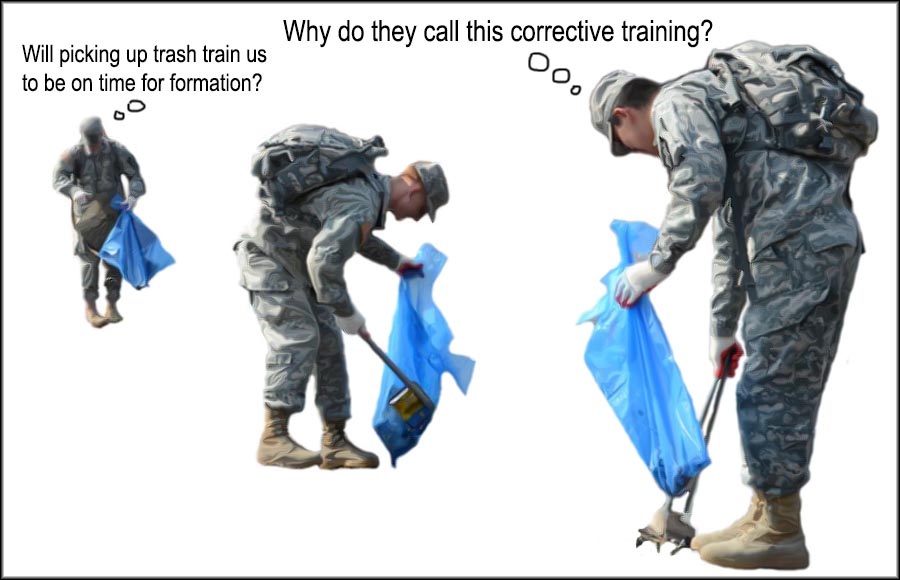Army Regulation For Leave : What it is
The Army Regulation for Leave is an essential document that outlines the guidelines and procedures for requesting and taking leave in the United States Army. This regulation serves as a valuable resource for soldiers and their supervisors to ensure the proper management and utilization of leave entitlements. In this post, we will explore the key aspects of the Army Regulation for Leave, providing a comprehensive understanding of its importance and how it affects soldiers' personal and professional lives. So, let's delve into the details! 1. Understanding the Army Regulation for Leave: The Army Regulation 670-1, also known as AR 670-1, is a comprehensive guide that governs the wear and appearance of the military uniform. It sets forth the standards and requirements for grooming, uniforms, and personal appearance of all individuals serving in the United States Army. As a part of AR 670-1, the Army Regulation for Leave focuses specifically on the policies and procedures related to taking leave. 2. Why is the Army Regulation for Leave Important? The Army Regulation for Leave is crucial for maintaining the operational effectiveness of the Army while also considering the well-being of its personnel. It ensures that soldiers have the opportunity to take much-needed rest and relaxation, spend time with their families, or address personal matters, while still adhering to the Army's overall mission readiness. 3. How to Request Leave: The process of requesting leave requires soldiers to follow specific steps outlined in the Army Regulation for Leave. Firstly, soldiers need to submit a written request to their commanding officer, detailing the desired period of leave and the purpose. This request should be submitted well in advance to allow for proper planning and coordination within the unit. Soldiers must also complete appropriate administrative forms, such as DA Form 31, to ensure their leave is well-documented and authorized. Heading: Common Misconceptions about Army Leave Subheading 1: Is leave guaranteed for all soldiers? Subheading 2: Can soldiers take leave whenever they want? Subheading 3: How far in advance should leave requests be submitted? Heading: Tips for Maximizing Army Leave Subheading 1: Plan your leave strategically Subheading 2: Ensure proper communication with your unit Subheading 3: Take advantage of additional benefits during leave Heading: Frequently Asked Questions (FAQs) about Army Leave Subheading 1: How much leave are soldiers entitled to? Subheading 2: Can soldiers extend their leave? Subheading 3: What happens if a leave request is denied? FAQ: Q: How much leave are soldiers entitled to? A: Soldiers are entitled to a specific amount of leave based on their active-duty service. As per the Army Regulation for Leave, soldiers typically earn 30 days of leave per year, which can be accumulated up to a maximum of 60 days. Q: Can soldiers extend their leave? A: In certain situations, soldiers may be able to extend their leave beyond the initially approved period. However, any extensions must be approved by the appropriate authority and are subject to the operational needs of the Army. Q: What happens if a leave request is denied? A: If a leave request is denied, soldiers must follow the directives given by their commanding officer. It is crucial to communicate and understand the reasons for denial and seek alternative options, if possible. By adhering to the guidelines outlined in the Army Regulation for Leave, soldiers can ensure a smooth and efficient process when requesting and taking leave. Their understanding and compliance with the regulation contribute to maintaining the operational readiness of the U.S. Army as a whole. As a soldier, it is essential to familiarize oneself with the Army Regulation for Leave and consult the appropriate resources within your unit for any specific queries or concerns. Remember, leave is not only a valuable benefit but also a time to recharge and refresh, ensuring you perform at your best when you return to your duties. Stay informed, plan strategically, and make the most of your well-deserved leave!  Image Source : excelspreadsheetsgroup.com
Image Source : excelspreadsheetsgroup.com  Image Source : watchesok.me
Image Source : watchesok.me  Image Source : www.reddit.com
Image Source : www.reddit.com  Image Source : excelspreadsheetsgroup.com
Image Source : excelspreadsheetsgroup.com  Image Source : excelspreadsheetsgroup.com
Image Source : excelspreadsheetsgroup.com  Image Source : civildefence.info
Image Source : civildefence.info  Image Source : armymilitary.net
Image Source : armymilitary.net  Image Source : www.army.mil
Image Source : www.army.mil
Memorandum Format Army Regulation - Financial Report
 Image Source : excelspreadsheetsgroup.com
Image Source : excelspreadsheetsgroup.com ARMY REGULATION 380-40 PDF
 Image Source : watchesok.me
Image Source : watchesok.me regulation
Army Directive 2019-05 (Army Military Parental Leave Policy) Has Been
 Image Source : www.reddit.com
Image Source : www.reddit.com army parental directive retroactive
Army - Financial Report
 Image Source : excelspreadsheetsgroup.com
Image Source : excelspreadsheetsgroup.com Army Memorandum Format Regulation - Financial Report
 Image Source : excelspreadsheetsgroup.com
Image Source : excelspreadsheetsgroup.com Incredible Army Regulation 670-1 2022
 Image Source : civildefence.info
Image Source : civildefence.info Army Regulation 635-200 - Army Military
 Image Source : armymilitary.net
Image Source : armymilitary.net Army Revamps Leave And Pass Regulation | Article | The United States Army
 Image Source : www.army.mil
Image Source : www.army.mil army pass regulation revamps military aerotechnews
Army parental directive retroactive. Memorandum format army regulation. Army pass regulation revamps military aerotechnews. Army regulation 635-200. Army memorandum format regulation